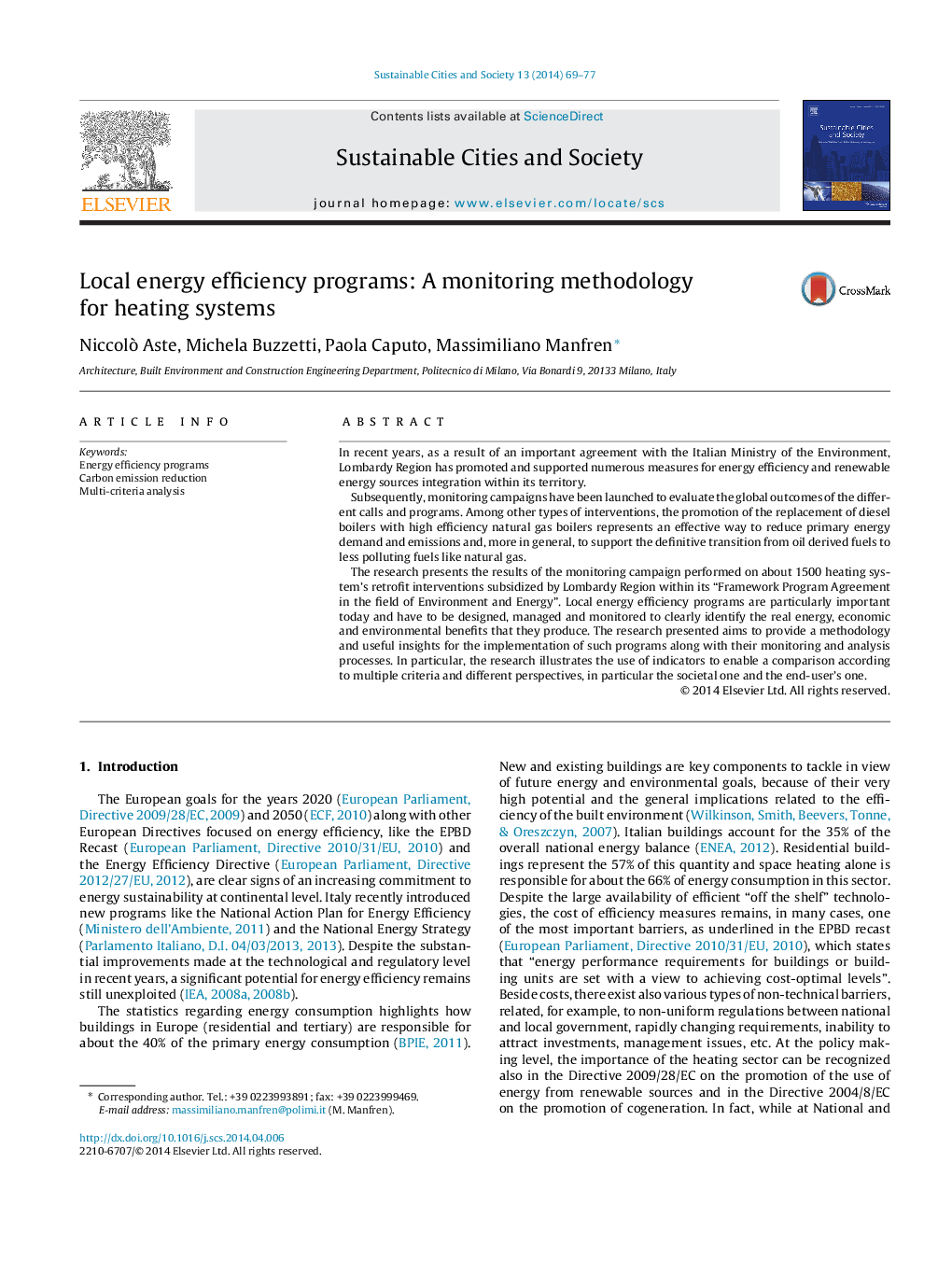| کد مقاله | کد نشریه | سال انتشار | مقاله انگلیسی | نسخه تمام متن |
|---|---|---|---|---|
| 308146 | 513529 | 2014 | 9 صفحه PDF | دانلود رایگان |
• The research focuses on an energy efficiency program for heating systems retrofit.
• The program subsidized the replacement of diesel boilers with natural gas ones.
• The heating systems status at the national and regional level is presented.
• Data collection, organization and analysis of performance indicators are described.
• The methodology can be generalized for using it in other efficiency programs.
In recent years, as a result of an important agreement with the Italian Ministry of the Environment, Lombardy Region has promoted and supported numerous measures for energy efficiency and renewable energy sources integration within its territory.Subsequently, monitoring campaigns have been launched to evaluate the global outcomes of the different calls and programs. Among other types of interventions, the promotion of the replacement of diesel boilers with high efficiency natural gas boilers represents an effective way to reduce primary energy demand and emissions and, more in general, to support the definitive transition from oil derived fuels to less polluting fuels like natural gas.The research presents the results of the monitoring campaign performed on about 1500 heating system's retrofit interventions subsidized by Lombardy Region within its “Framework Program Agreement in the field of Environment and Energy”. Local energy efficiency programs are particularly important today and have to be designed, managed and monitored to clearly identify the real energy, economic and environmental benefits that they produce. The research presented aims to provide a methodology and useful insights for the implementation of such programs along with their monitoring and analysis processes. In particular, the research illustrates the use of indicators to enable a comparison according to multiple criteria and different perspectives, in particular the societal one and the end-user's one.
Journal: Sustainable Cities and Society - Volume 13, October 2014, Pages 69–77
